 Metabolic Dysfunction: 5 Ways to Support Fat Burning
Metabolic Dysfunction: 5 Ways to Support Fat Burning
Metabolic dysfunction is the inability of the body to burn fat efficiently as energy. Most people are stuck in a chronic sugar-burning, sugar-craving cycle and depend on a constant inflow of high carb meals, snacks and grazing periods to maintain their energy and stamina throughout day.
Metabolic dysfunction results when the body depends on the inferior source of fuel (sugar and carbs) rather than what it was designed to burn for daily energy (healthy fats). Essentially, metabolic syndrome is a combination of specific health conditions that are a powerful precursor to today’s most serious diseases. The symptoms include elevated blood pressure, high blood sugar, excess body fat around the waist, and abnormal cholesterol or triglyceride levels. These health disorders lead to a serious risk of heart disease, stroke and diabetes (1).
Metabolic Dysfunction is a blanket term that characterizes the conditions that lead to today’s most deadly diseases listed in the graphic below.
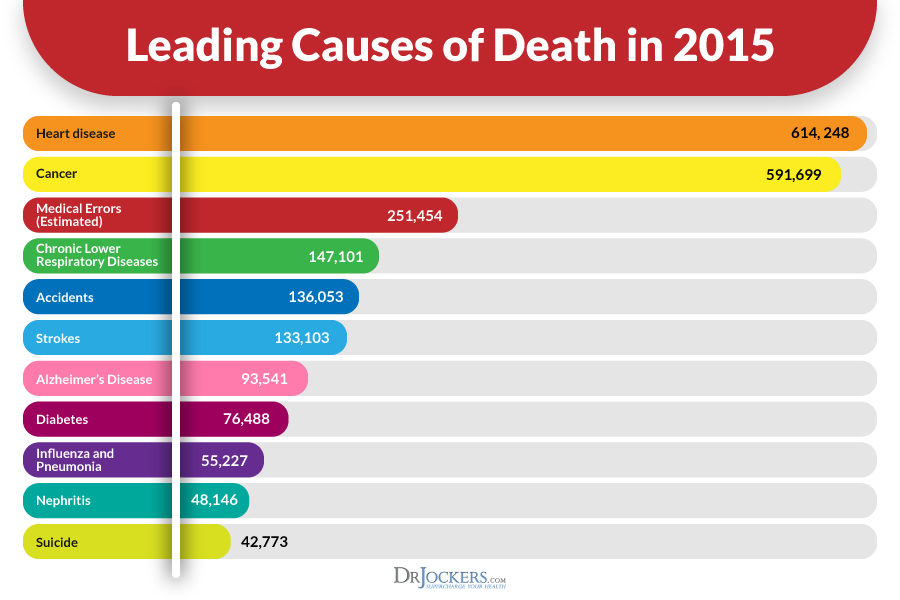
Signs of Metabolic Dysfunction
The consequences of metabolic dysfunction include more than the three potentially fatal diseases just mentioned. A host of autoimmune diseases and degenerative physical and mental function are equally serious consequences of this often-ignored major enemy of health. These peripheral side effects are a consequence of poor functioning mitochondria, which dictate the ability of every cell in the body to carry out its respective functions.
Impaired, inefficient fat burning is a causative factor in diabetes, heart disease and high cholesterol and triglyceride levels. These combined factors also are an indication of poor mitochondrial function. Poor mitochondrial function is associated with poor health outcomes in all disease categories. The following are key signs of metabolic dysfunction and mitochondrial disorders.
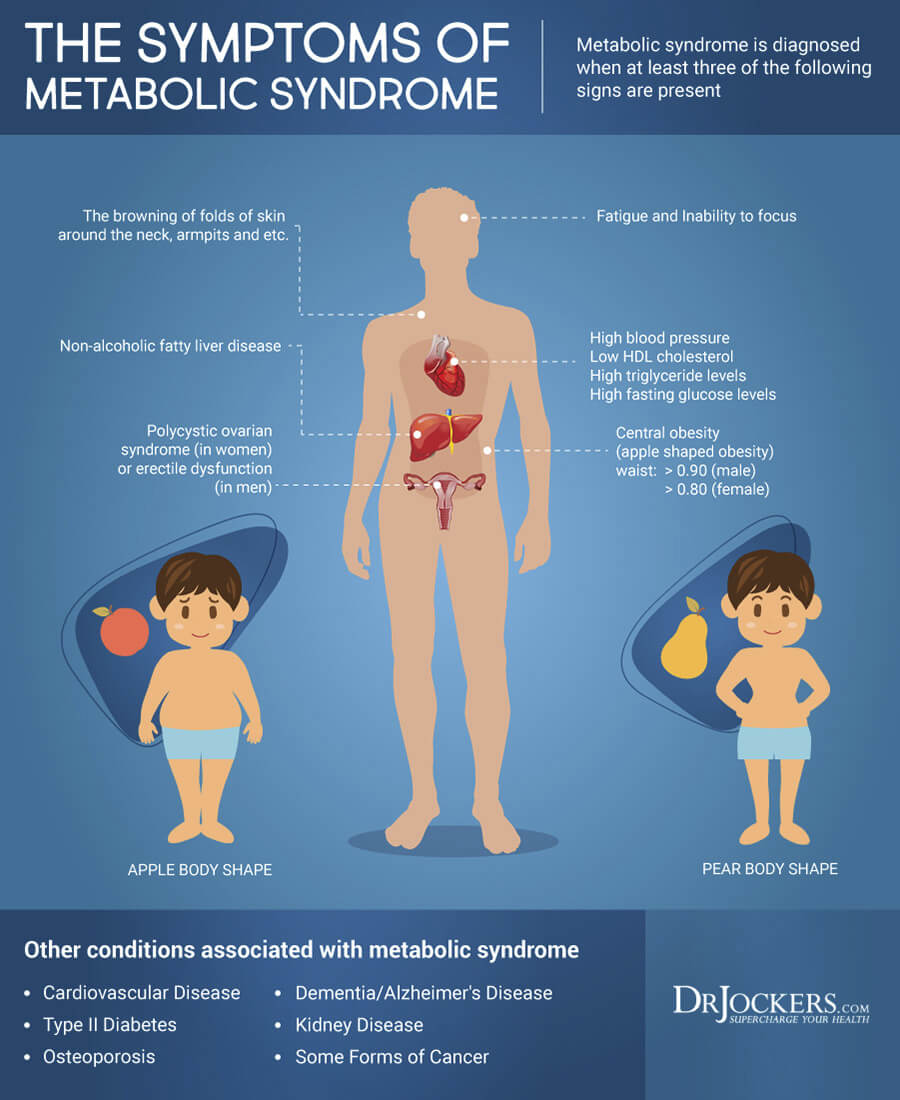
Increasing Rates of Obesity
The most recent National Health and Nutrition Examination Survey, as reported by the CDC, confirms the spiraling rate of obesity in America (and these numbers are likely higher now):
- In 2015–2016, the prevalence of obesity was 39.8% in adults and 18.5% in youth.
- The rate of obesity was higher among middle-aged adults than among younger adults. and was significantly higher among youth aged 6–19 years than with children aged 2–5 years (2).
Think about this: almost 40% of adults and 20% of children aged 6-19 around in our country are overweight. The impact of obesity on health is impossible to exaggerate. The World Health Organization (WHO) reports that there has been a tenfold increase in childhood and adolescent obesity in four decades; and that the world will have more obese children and adolescents than underweight by 2022 (3).
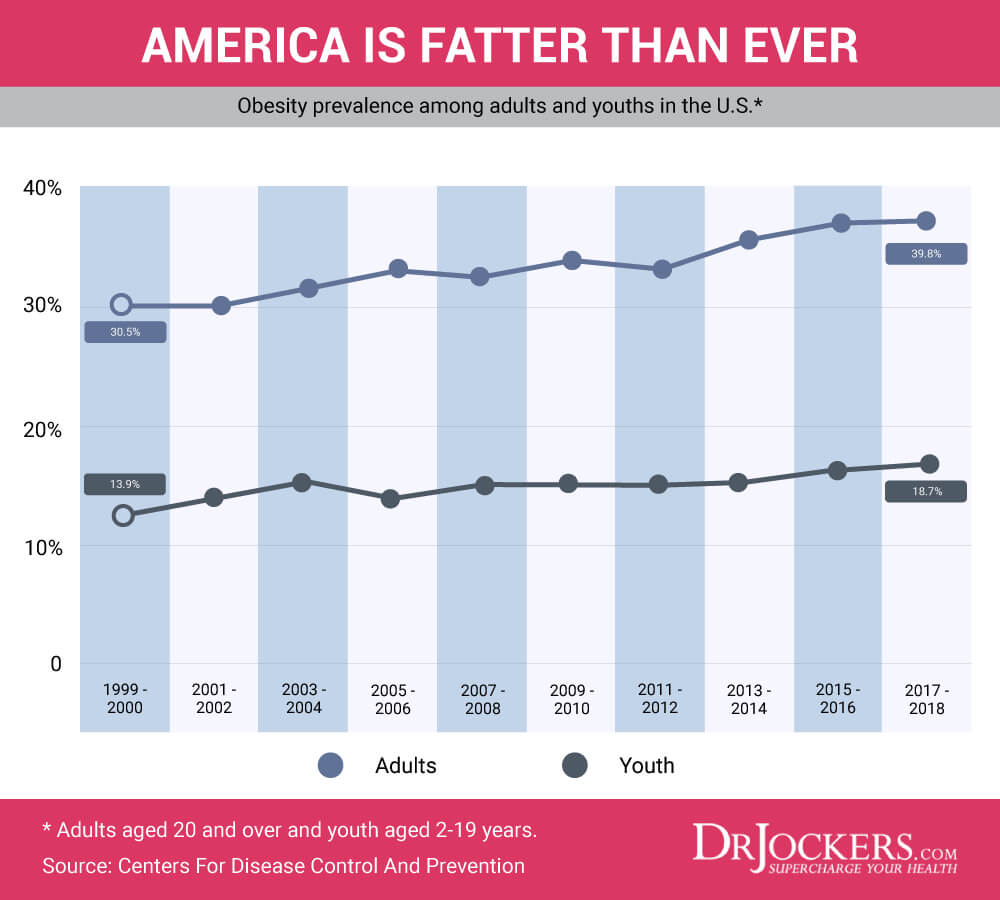
More on Obesity Rates
When we rely on carbs too heavily, consume the wrong kinds of fats, or consume too much protein – weight gain and obesity naturally results. This especially holds true in the US where processed carbs, processed factory-farmed meats, and inflammatory vegetable oils are a staple in the diet.
As a result, the US is leading the way in metabolic dysfunction. As cheap convenience foods become more readily available around the world, other parts of the world will begin experiencing these same trends.
Obesity is serious, costly…and preventable! It is associated with the world’s most serious diseases, including:
- Heart disease and stroke
- Diabetes
- Musculoskeletal disorders (especially osteoarthritis)
- Some cancers (including endometrial, breast, ovarian, prostate, liver, gallbladder, kidney, and colon)
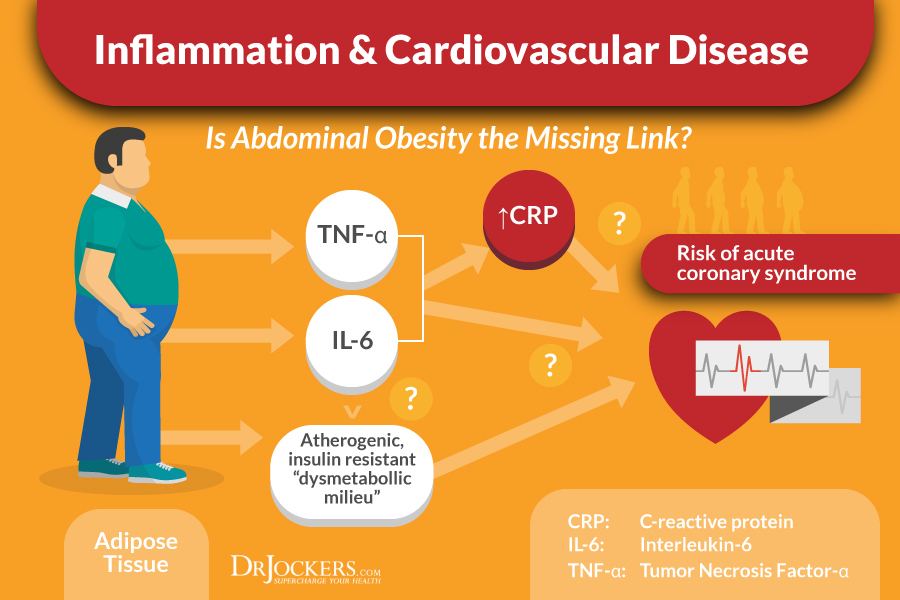 Increasing Rates of Degenerative Diseases
Increasing Rates of Degenerative Diseases
Neurodegenerative diseases such as Alzheimer’s, Huntington’s and Parkinson’s diseases are also on the rise. The National Institutes of Health reports that there is a connection between metabolic dysfunction and neurodegenerative diseases (4).
Chronic, degenerative diseases also affect bones, blood vessels, heart and muscle tissue. There certainly is a genetic component to many of these disease states. What many people fail to realize, however, is that genetic pathways can be supported or inhibited by the environment. This includes things like the foods we eat, chemicals we expose ourselves to, sunlight exposure, hydration levels, exercise, and more.
By engaging in activities that support the mitochondria, you can essentially prevent metabolic dysfunction and substantially lower your chances of succumbing to a degenerative disease.
Chronic diseases are the leading cause of death and disability in the United States. 133 million Americans – 45% of the population – have at least one chronic disease which are responsible for seven out of every 10 deaths in the U.S., killing more than 1.7 million Americans every year (5).
 Established Nutrition Guidelines
Established Nutrition Guidelines
FAT has been touted as the single greatest enemy of overall health – for many decades. The war against fat basically began with one man, Ancel Keys (1904-2004), an American physiologist who studied the influence of diet on health. He hypothesized that dietary saturated fat causes heart disease and should be avoided (6). Thus began the mass exodus from natural, healthy fats.
But not everyone got on the anti-fat bandwagon, in spite of the fact that the low-fat anti-saturated fat dogma became an official part of the USDA dietary guidelines in the early 1970’s. Gary Taubes wrote an article in the N.Y. Times in 2002, mentioning how Dr. Atkins (founder of The Atkins Diet) had been right all along urging a high-fat diet and limiting carbohydrates (7).
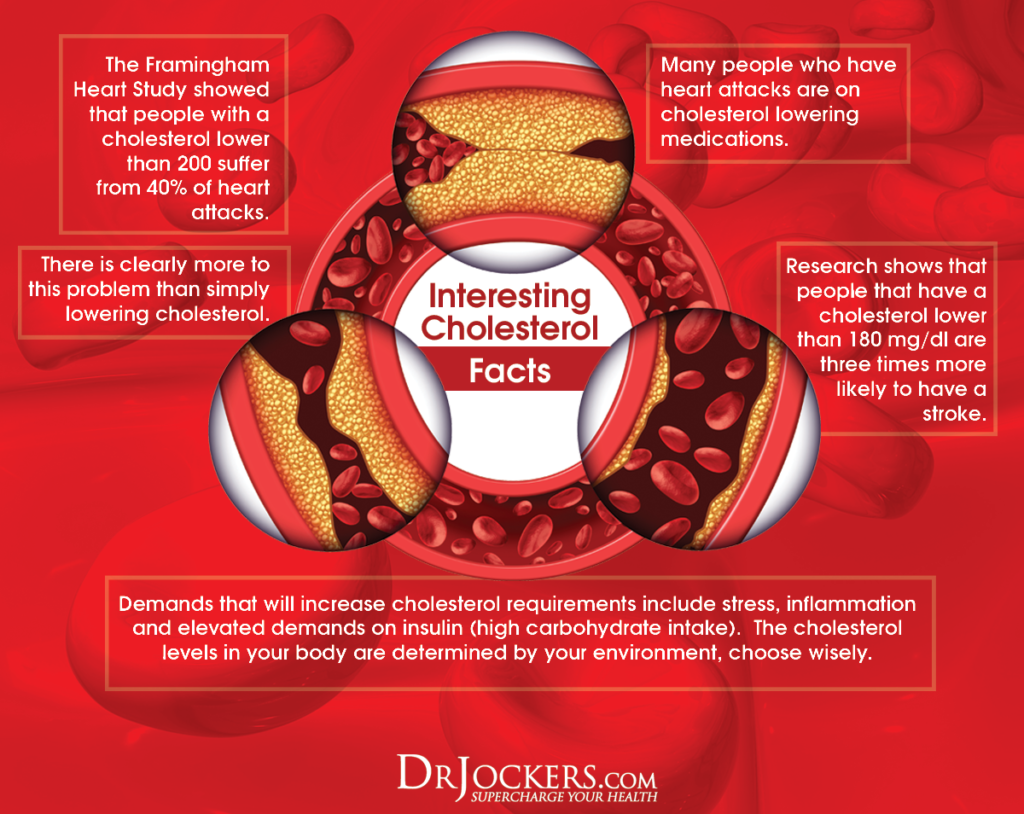
Modern Food Pyramid
Today, the low-fat advice that swept the country following Keys’ research (which we now know was flawed) is seen as perhaps one of the worst trends in the health of our nation. As Americans began consuming large amounts of refined carbohydrates and added sugars, and avoiding the healthy fats past generations knew they needed, we contributed to the metabolic dysfunction syndrome characterized by a rise in triglycerides and LDL, a lowering of HDL (or good cholesterol) and the sugar-induced weight gain and incidence of diabetes that plagues so many today.
For many decades, Americans were schooled in the best food choices for optimum health, described as the Standard American Diet (aka SAD). This misinformation – dare we say medical propaganda – gave birth to the creation of the USDA-sponsored “Food Pyramid” – a chart we have all seen countless numbers of times.
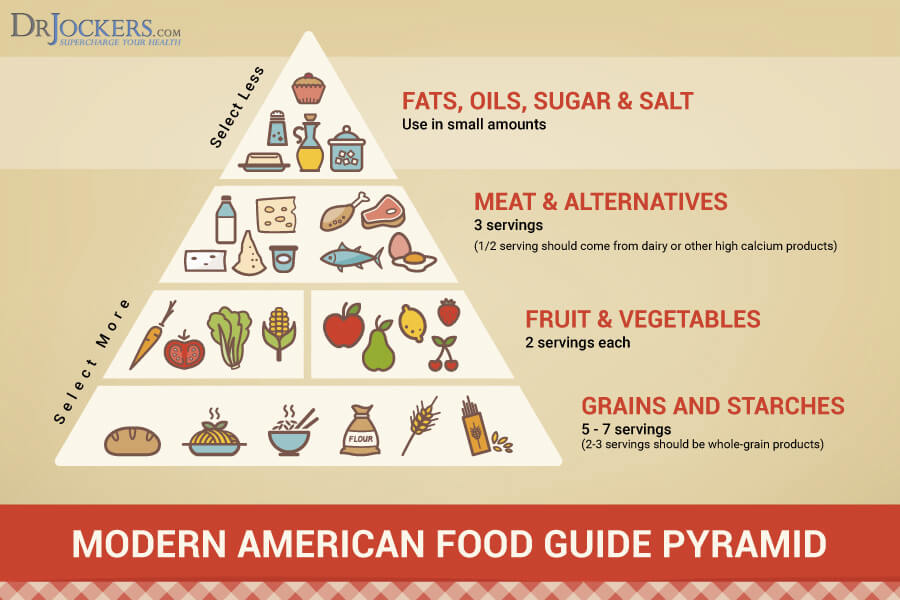
Blood Sugar Instability
However, we now know that the SAD diet is a precursor to metabolic dysfunction. The heavy emphasis on carbs and processed foods – though deceptively convenient – is a catalyst for many of the world’s most debilitating diseases.
The base of the traditional food pyramid represents the foods that should be eaten in the largest quantity each day. Unfortunately, bread, cereal, pasta, rice, even whole grains, are carbs that break down quickly into glucose, causing a spike in blood sugar followed by a rapid crash, causing a craving for more carbs to provide inferior fuel for energy. It’s a revolving door that never leads anywhere.
The next level up includes fresh fruits and vegetables – good choices with a caveat that not all fruits and vegetables are equally healthy from the standpoint of blood sugar balance and weight management.
And finally, at the top of the traditional food pyramid are the foods we should consume the least each day: meat, dairy and fats.
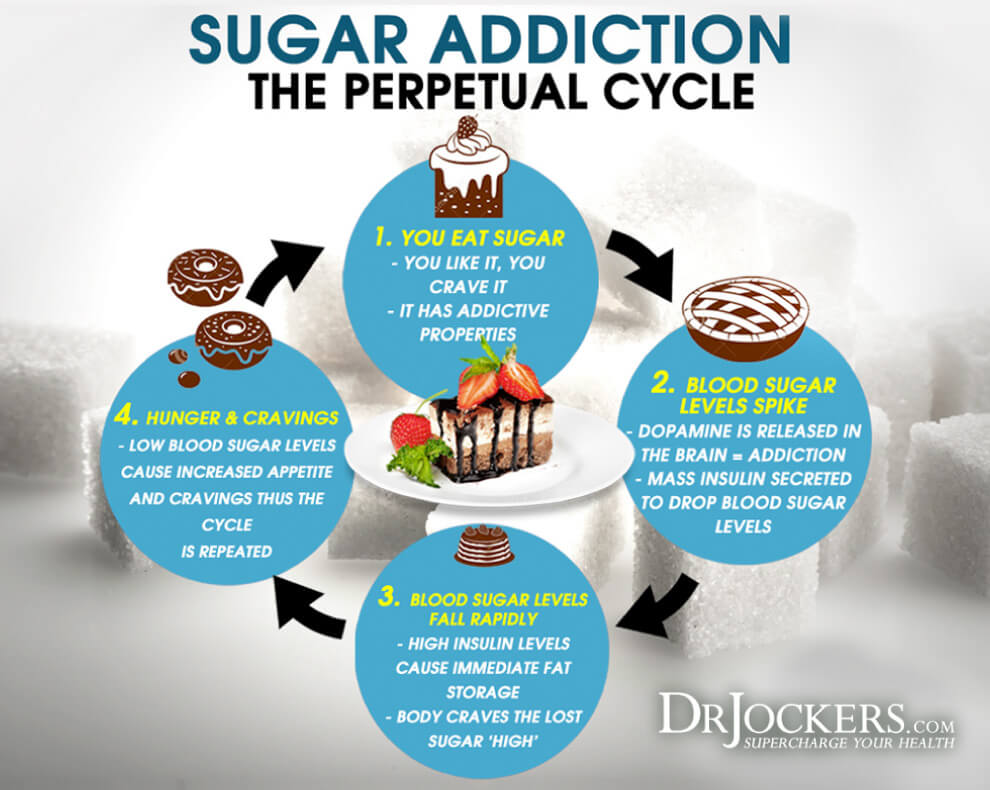
Metabolically Favorable Food Plan
Starting out working with diseased people from all walks of life, I noticed a common link. A diet heavily reliant on carbs and devoid of healthy fats did not seem to provide health benefits. By providing a new dietary template, a drastic shift was often seen in how people looked, felt, and experienced their daily lives. This template flipped the old paradigm on its head, favoring healthy fats as a primary fuel for the human body.
Training the body to burn fats as a primary fuel source is the catalyst for health in many cases. This initially places a minor stress on the body which promotes the discarding of dysfunctional mitochondria to be replaced with stronger and more resilient ones. To learn how to stimulate this process, check out this article: The Keto Metabolic Makeover
These changes were also observable from a clinical standpoint in functional lab analysis as I saw improved cholesterol balance, lower inflammation, and improved insulin levels.
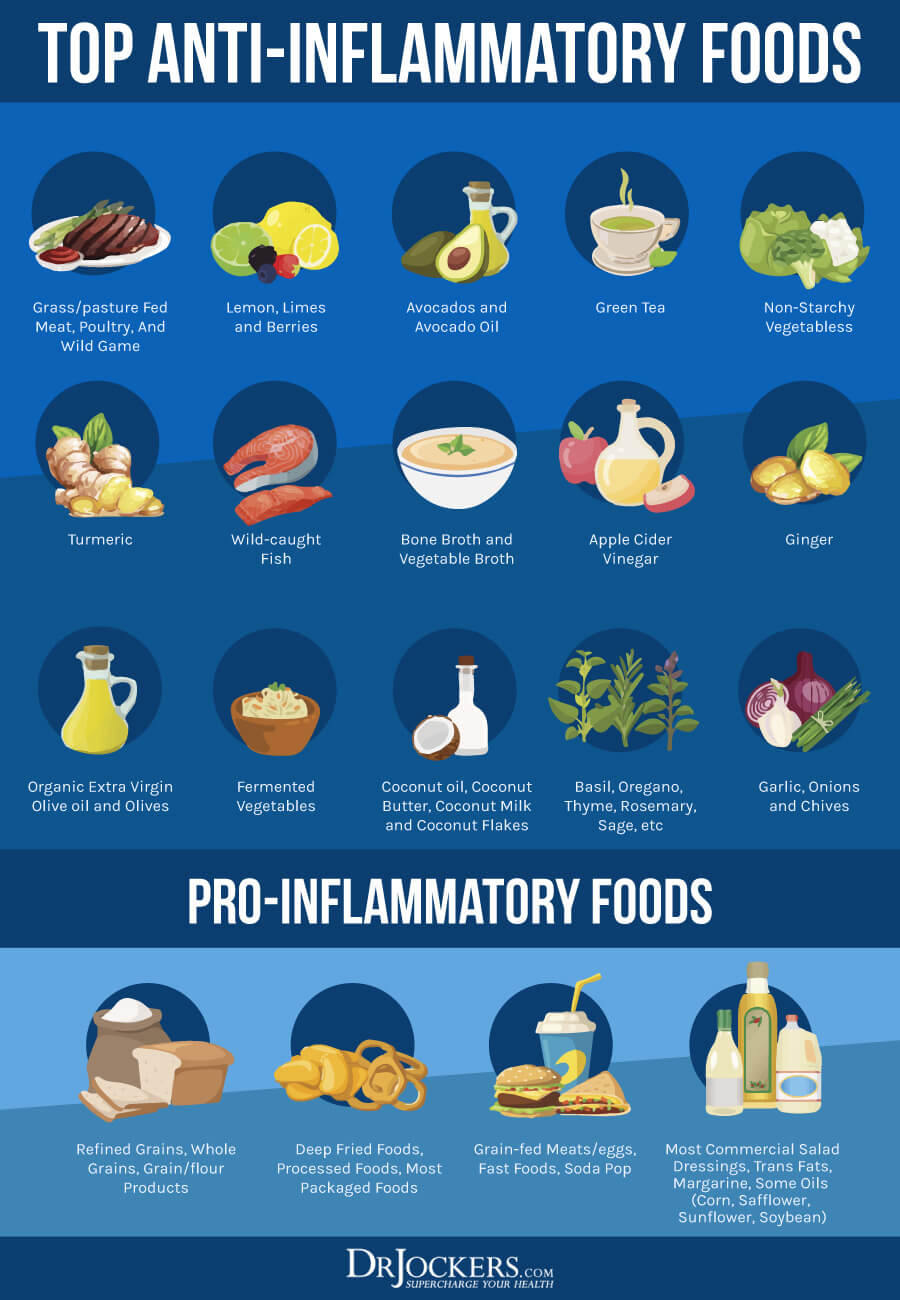
Steps to Reverse Metabolic Dysfunction
Our food choices will either weaken our immune system and set us up for a variety of autoimmune, metabolic diseases; or will allow our bodies to achieve and maintain vibrant health from the cellular level and beyond.
Even before engaging in a ketogenic lifestyle, as I will discuss shortly, beginning with 3 simple steps goes a long way. These 3 steps characterize a healing diet: reduce sugar and grain intake, get rid of bad fats and replace with good fats, and finally opt for pastured meats over those raised in unhealthy factory farms.
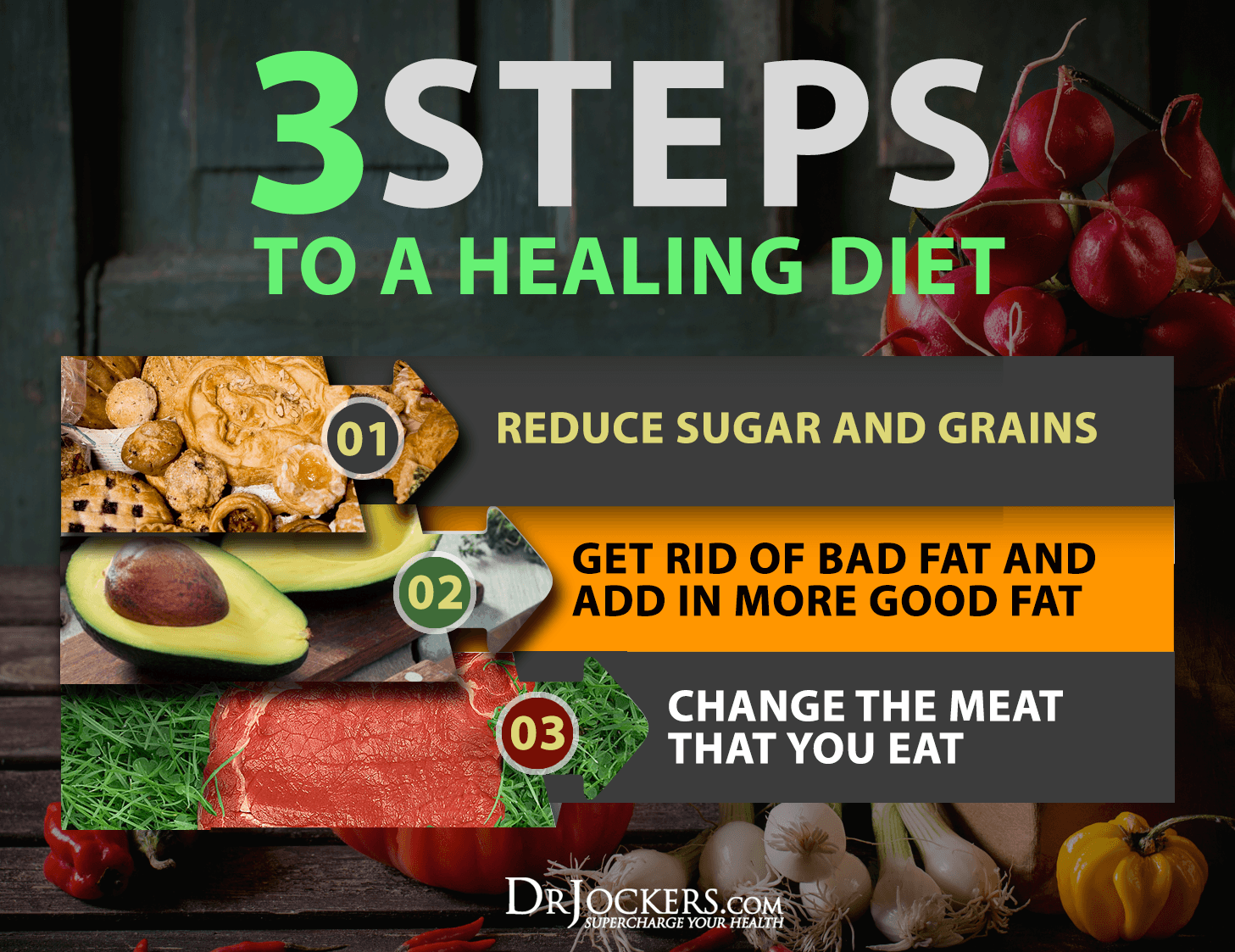
Healing Diet Benefits
The principles of a healing diet are not difficult or profound. Let me simply list the five amazing benefits of a healing diet without elaborating on each one. For an in-depth discussion, check out this article: 5 Benefits of a Healing Diet.
Here’s what will happen when you reverse the Traditional Food Pyramid and follow a Keto Food Pyramid, healing diet. You will likely:
- Reduce Inflammation– Involved in Every Major Chronic Disease Process
- Stabilize Blood Sugar
- Reduce the Toxic Load on the Body
- Provide Full-Spectrum Nutrition– Including all macro and micro-nutrients
- Support a Healthy pH– Slight Alkaline Balance
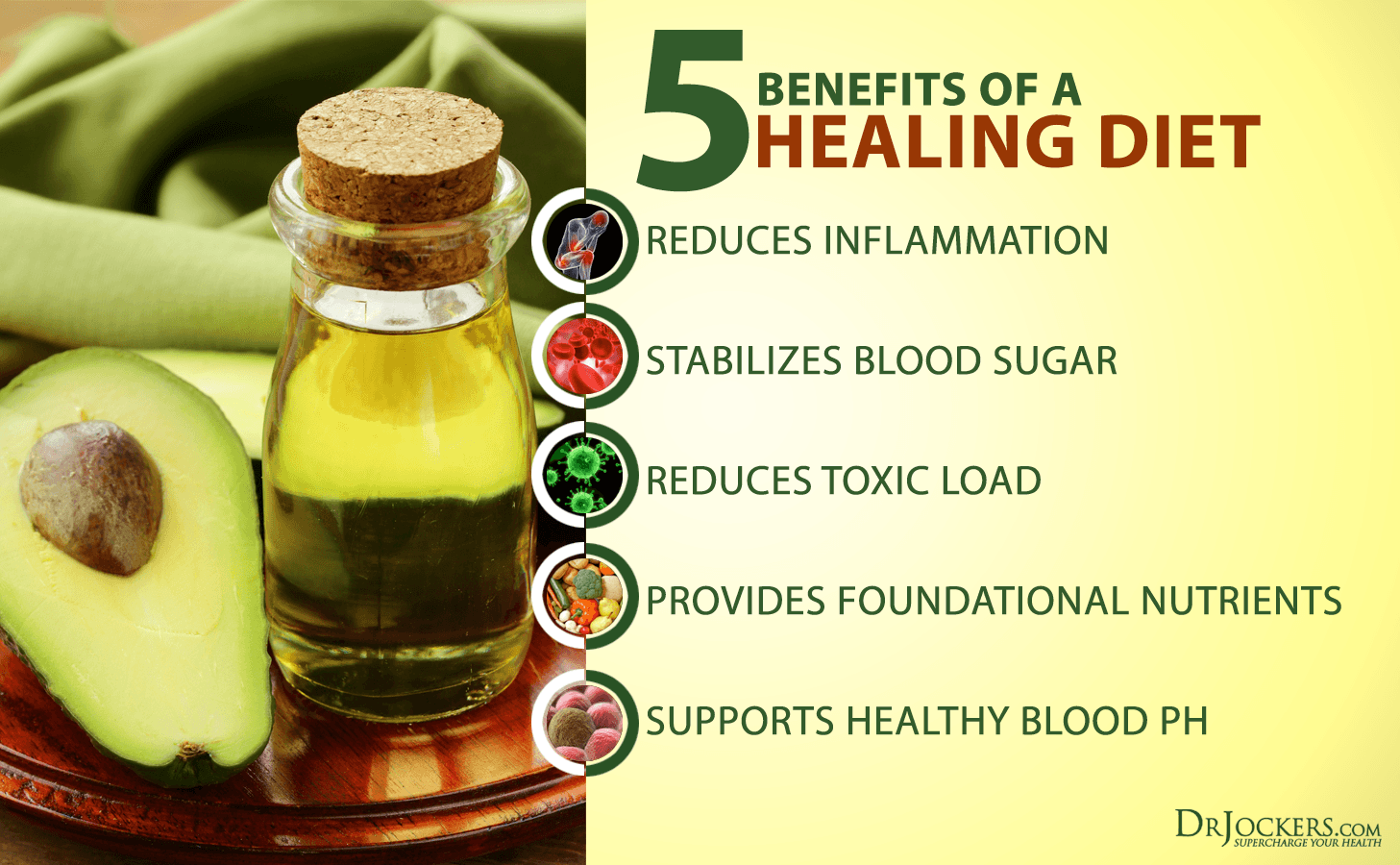
Ketogenic Lifestyle
Once you have taken the steps to implement a healing diet as outlined above, shifting your body into a state of ketosis (at least temporarily) can keep the momentum moving in the right direction.
A ketogenic diet consists roughly of 60-80% healthy fats, 20-30% clean protein, and only 5-10% (or less) of carbohydrates. Eating this way gently teaches the body to burn fat as a primary energy source. Fats provide a more efficient and sustainable energy source to your cells that is favorable compared to the ups and downs of carbohydrate metabolism.
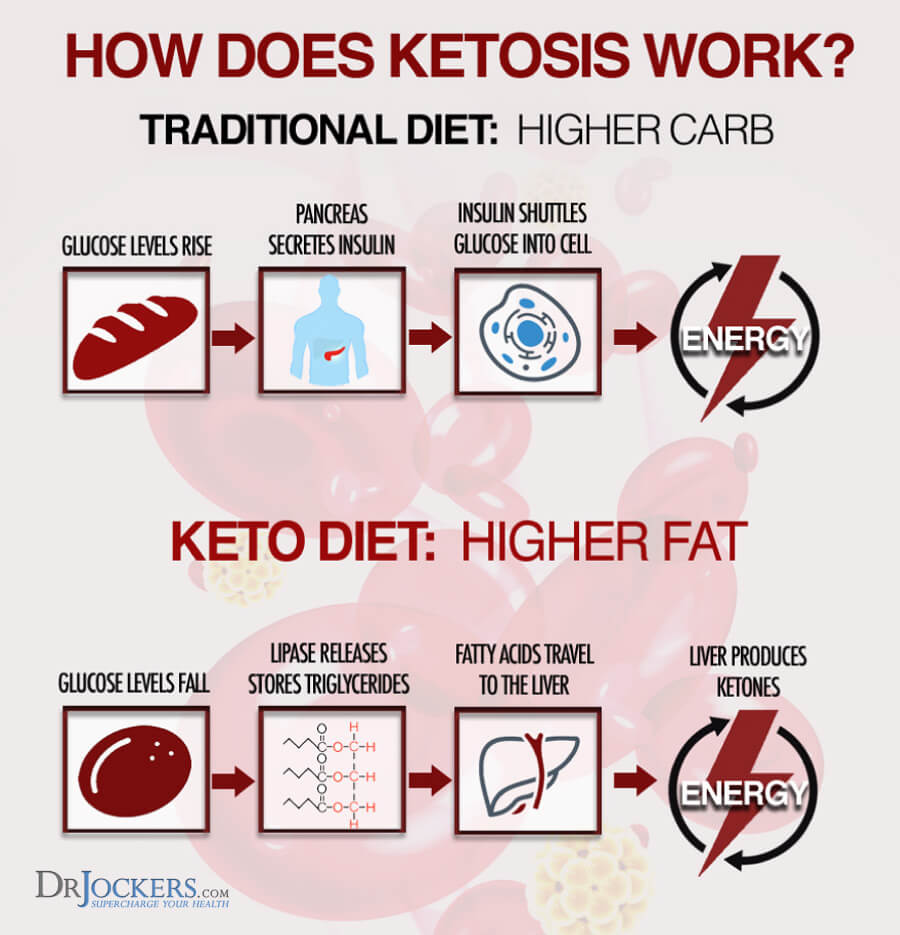
Benefits of a Ketogenic Diet for Metabolic Dysfunction
Research has shown that reducing carb intake is much more favorable against obesity, diabetes, and heart disease than a low fat diet (8). In fact, shifting your body into a fat-burning state seems to be very therapeutic for metabolic dysfunction by upregulating the formation of mitochondria within cells. This allows for more efficient energy production and utilization in the body.
Researchers at the Mayo Clinic, publishing in the Journal of Alzheimer’s Disease, reported the results of a study exploring diet as it relates to dementia risk. They followed over 2,000 elderly persons for almost 4 years, monitoring their daily consumption of protein, fat and carbohydrate.
The results of the study were convincing! The risk of dementia in those at the higher level of carbohydrate consumption, was increased by close to 90%. Those whose calories came more from fat had a 44% reduced risk of dementia. Higher protein consumption was also associated with reduced dementia risk, by around 21% (9).
This is just a small glimpse into the many benefits that can be derived from getting the body into a state of ketosis. For a more in-depth look at these benefits, check out this article: 9 Proven Benefits of a Ketogenic Diet

For maximum benefits, it is important to opt for optimal fat sources. The chart below outlines some of the best fats to include and the worst fats to avoid while implementing this lifestyle.
On the other hand, our brains, blood and organs take an enormous hit when we consume toxic trans fats. Here is an easy chart you can follow to be sure you eat plenty of good fats, and totally avoid bad fats:

Ketosis and Blood Sugar
Teaching your body to burn fat instead of carbs as a primary fuel source has many benefits. For one, it helps to re-stabilize blood sugar, a massive issue in our society. Stabilizing blood sugar tends to have a positive impact on diabetes, cardiovascular disease risk, obesity, and much more. By giving insulin receptors a break and switching to fat-burning for a period of time, the cells have a chance to restore insulin sensitivity, allowing for more efficient glucose metabolism.
These metabolic diseases are the leading causes of death today. Studies consistently show the benefits of a low-carb, high-fat nutrition plan in this regard (10).
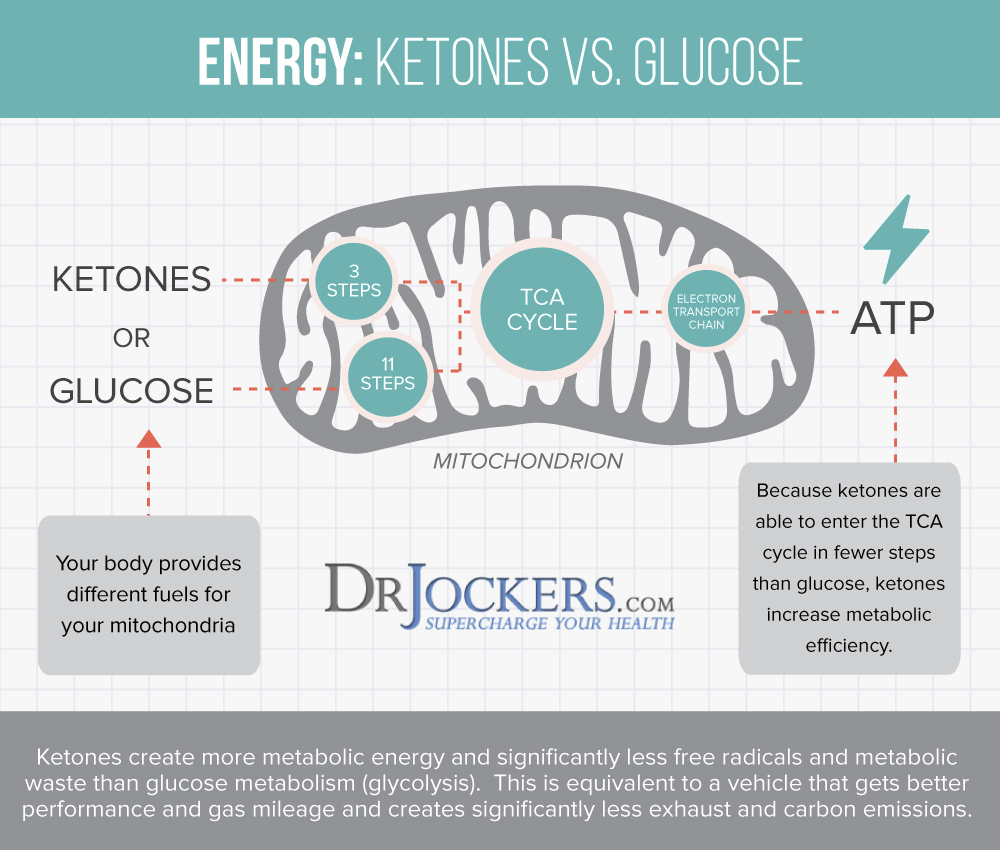
Ketogenic Food Pyramid
Now that we’ve discussed the shortcomings of established nutritional advice we can lay out a more beneficial food pyramid. This pyramid is illustrated below.
First and foremost, you will notice that the base of the pyramid consists of fats like avocados, coconut oil, grass-fed butter, pasture-raised eggs, etc. These provide the basis for your body to burn fat more effectively while offering their own unique health benefits. These should be the primary source of calories in your diet.
Next, we want to flood the body with antioxidant-rich vegetables, fruits, and herbs. This helps to provide a dense-array of micronutrients and enhance the anti-inflammatory benefits of a ketogenic diet.
Finally, we have moderate amounts of clean proteins like pastured meats, wild-caught fish, and bone broth. This new foundation for eating is what has reliably put many people back in control of their health once and for all.
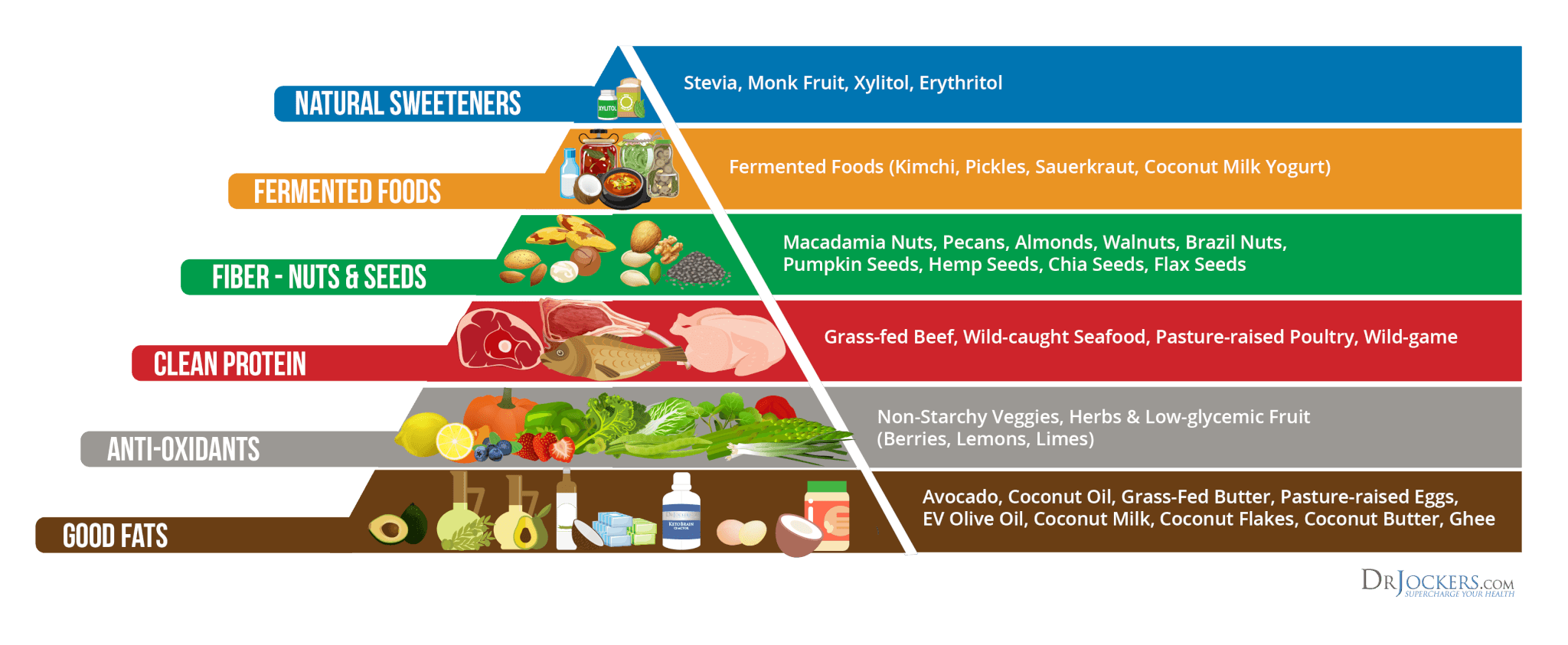
Summary
Metabolic dysfunction is characterized by a poor utilization of energy at the mitochondrial level. The consequences include poor blood sugar balance, inflammation, weight gain, and many chronic diseases. This includes things like obesity, diabetes, heart disease, neurodegenerative disorders, and even cancer.
Switching your body into a fat-burning state for periods of time can be very therapeutic for metabolic dysfunction. For a comprehensive crash course on the ketogenic lifestyle – complete with shopping guides, meal plans, videos, and numerous troubleshooting guides – I have designed the Navigating the Ketogenic Diet Course.
This is a constantly updated program that you get lifetime access to. It is designed to help you see maximum benefits while following a ketogenic lifestyle.





Keto for vegetarians?
https://drjockers.com/plant-based-ketogenic-diet/